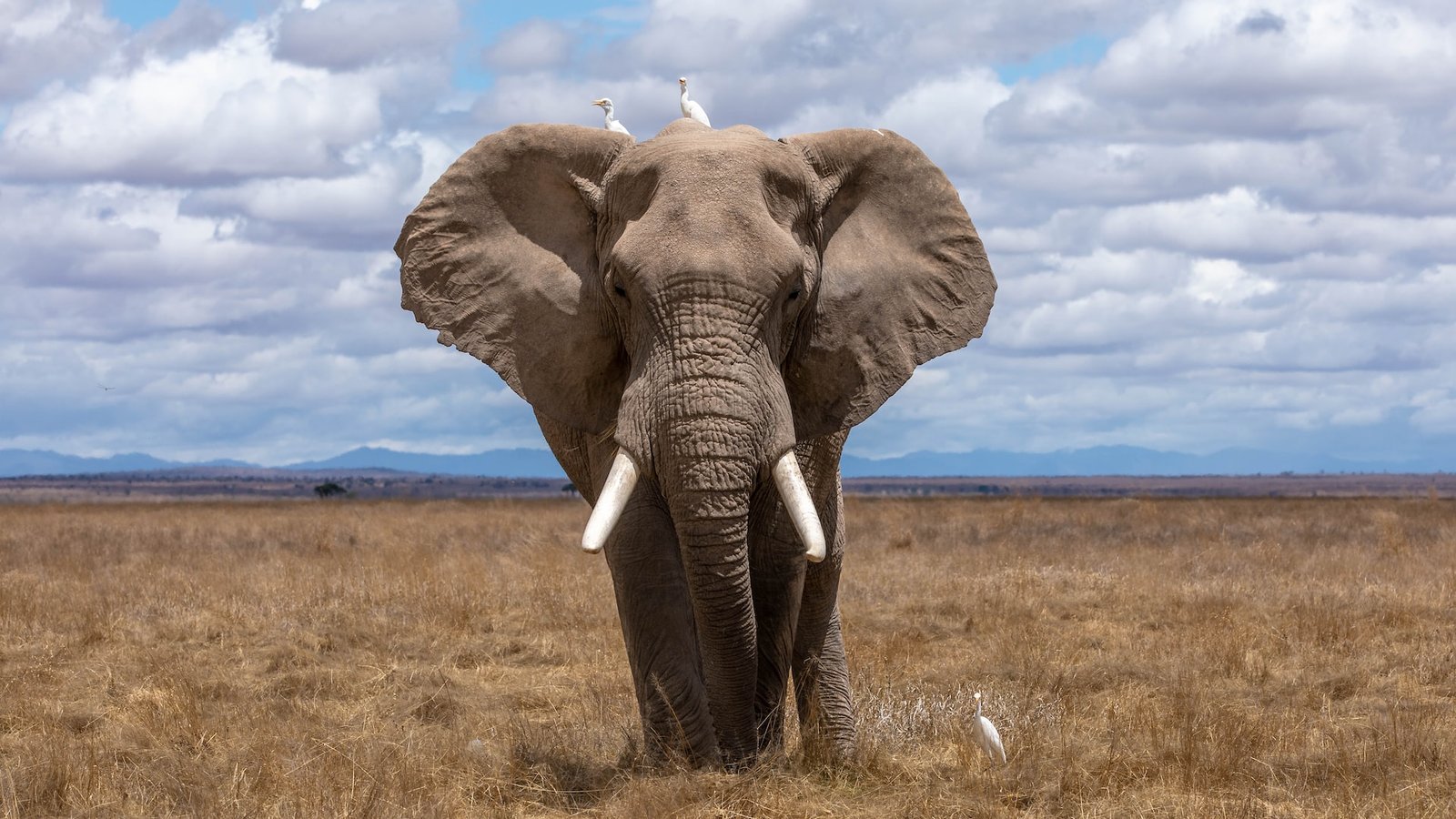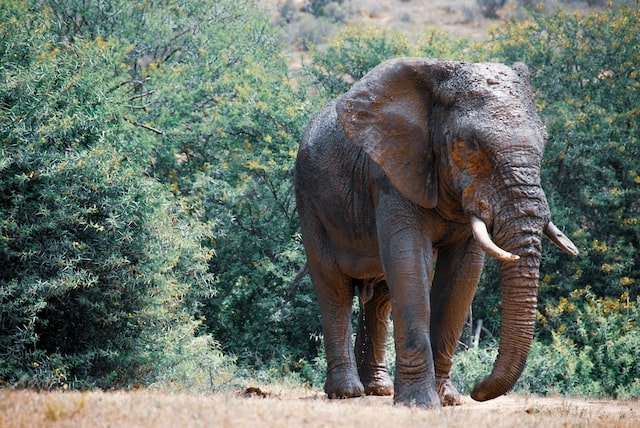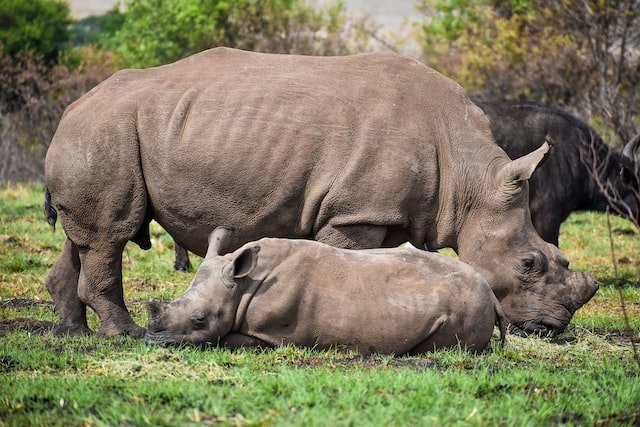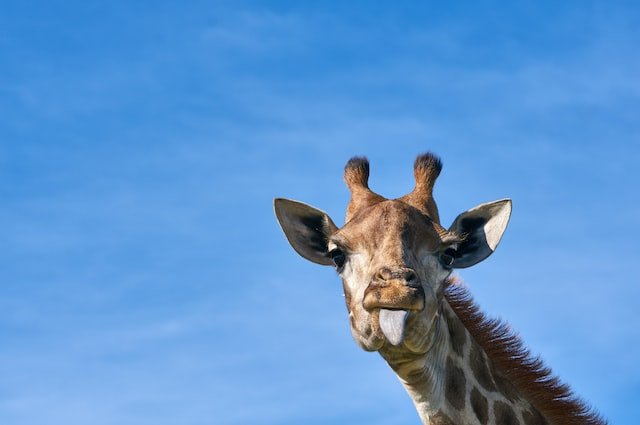Mammals are the heaviest land animals. The African elephant is now divided into two species: the African bush elephant and the African forest elephant, as they are now widely recognized as distinct species.
1. African Bush Elephant
Average mass [tonnes] 4.9
The African bush elephant is one of two African elephant species that still exist, and one of three elephant species that still exist. Bulls can reach a shoulder height of 3.96 m (13 ft 0 in) and a body mass of 10.4 t, making it the largest living terrestrial animal (11.5 short tons). It lives in forests, grasslands and woodlands, wetlands, and agricultural land in 37 African countries. It has been listed as Endangered on the IUCN Red List since 2021.
It is primarily threatened by habitat destruction, but it is also threatened by poaching for meat and ivory in parts of its range. It is a social mammal that travels in herds of cows and their offspring. Adult bulls usually live alone or in small groups of bachelors. It eats grasses, creepers, herbs, leaves, and bark as a herbivore.
2. Asian Elephant
Average mass [tonnes] 4.15

The Asian elephant, also known as the Asiatic elephant, is the only living species of the genus Elephas and can be found throughout the Indian subcontinent and Southeast Asia, ranging from India in the west to Nepal in the north, Sumatra in the south, and Borneo in the east. There are three recognized subspecies: E. m. Maximus from Sri Lanka, E. m. indicus from mainland Asia, and E. m. sumatranus from the island of Sumatra.
3. African forest Elephant
Average mass [tonnes] 2.7
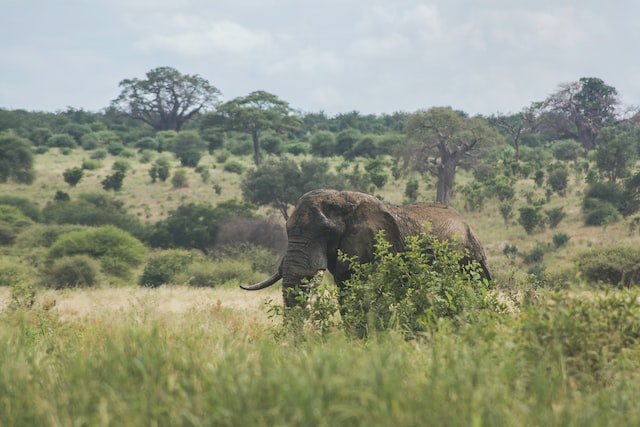
The African forest elephant is one of only two African elephant species that still exist. It is native to West African humid forests and the Congo Basin. It is the smallest of the three living elephant species, standing at 2.4 m at the shoulder (7 ft 10 in). Both sexes have straight, downward-pointing tusks that emerge between the ages of 1-3 years. It lives in families of up to 20 members. It makes a significant contribution to the preservation of the composition and structure of West African Guinean forests and Congolese rainforests.
Overhunting caused a sharp decline in population during the twentieth century, and by 2013, it was estimated that less than 30,000 individuals remained. Its survival is jeopardized by habitat loss, fragmentation, and poaching.
4. White Rhinoceros
Average mass [tonnes] 2
The white rhinoceros, also known as the white rhino or square-lipped rhinoceros, is the largest extant rhinoceros species. It has the most social of all rhino species and has a large mouth for grazing. The white rhinoceros is divided into two subspecies: the southern white rhinoceros, which had an estimated population of 19,682-21,077 wild animals in 2015, and the much rarer northern white rhinoceros. The northern subspecies has only two confirmed individuals left in 2018 (two females: Fatu, 18 and Najin, 29), both in captivity. Sudan, the world’s last known male northern white rhinoceros, died on March 19, 2018 in Kenya.
5. Indian Rhinoceros
Average mass [tonnes] 1.9

The Indian rhinoceros, also known as the Indian rhino, greater one-horned rhinoceros, or great Indian rhinoceros, is a rhinoceros species native to the Indian subcontinent. It is classified as Vulnerable on the IUCN Red List because populations are fragmented and limited to less than 20,000 km2 (7,700 sq mi). Furthermore, the extent and quality of the rhino’s most important habitat, the alluvial Terai-Duar savanna, grasslands, and riverine forest, are thought to be declining due to human and livestock encroachment. The global population was estimated to be 3,588 people in August 2018, including 2,939 in India and 649 in Nepal.
Indian rhinos once roamed the entire Indo-Gangetic Plain, but overhunting and agricultural development reduced their range to 11 locations in northern India and southern Nepal. In the early 1990s, it was estimated that between 1,870 and 1,895 Indian rhinos were still alive. Since then, the government’s conservation efforts have resulted in an increase in population. Poaching, however, remains a constant threat, with poachers killing over 150 Indian rhinos in Assam between 2000 and 2006.
Assam is home to nearly 85% of the world’s Indian rhinoceros population, with Kaziranga National Park housing 70% of the rhino population.
6. Hippopotamus
Average mass [tonnes] 1.8

7. Javan Rhinoceros
Average mass [tonnes] 1.75
8. Black Rhinoceros
Average mass [tonnes] 1.1
9. Giraffe
Average mass [tonnes] 1.0
10. Gaur
Average mass [tonnes] 0.95

